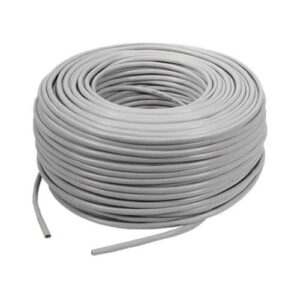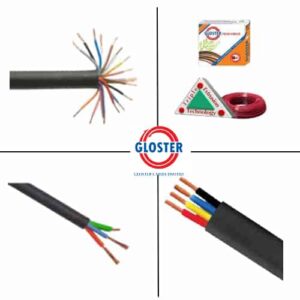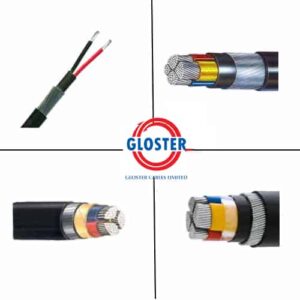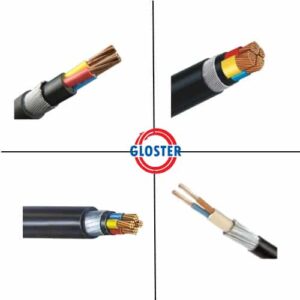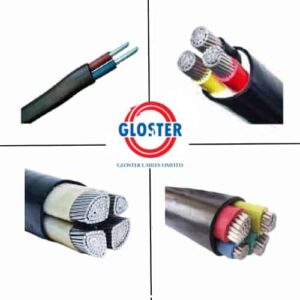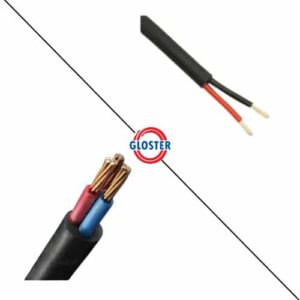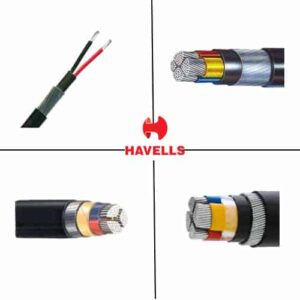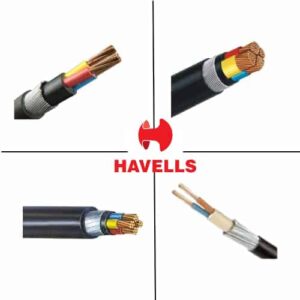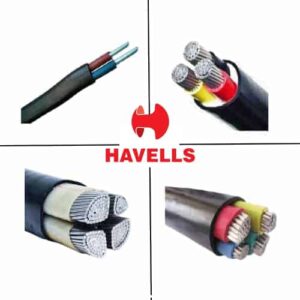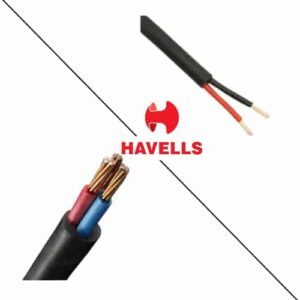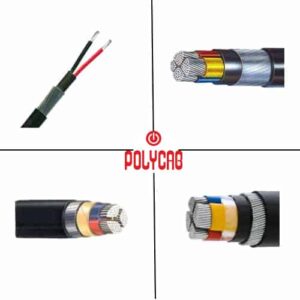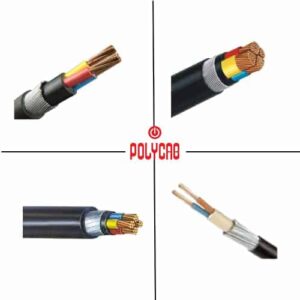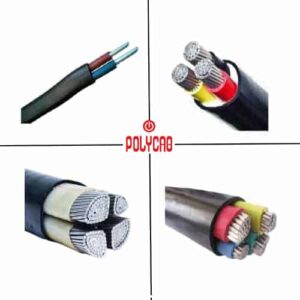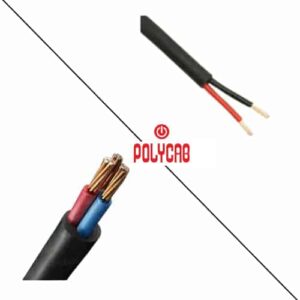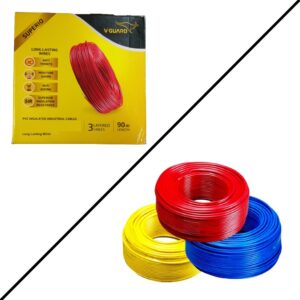Gloster 3 Core Flat Submersible Flexible Copper Cable PVC Insulated and PVC Sheathed
₹75.33 – ₹1,507.16/ 1 MetreGloster Armoured Aluminium LT Cable PVC/XLPE Insulated Armoured Overall PVC Sheathed 1100 Volts
₹33.37 – ₹1,812.32/ 1 MetreGloster Armoured Copper LT Cable PVC/XLPE Insulated Overall PVC Sheathed 1100 Volts
₹38.07 – ₹8,894.75/ 1 MetreGloster Unarmoured Aluminium LT Cable PVC/XLPE Insulated Overall PVC Sheathed 1100 Volts
₹22.95 – ₹6,750/ 1 MetreGloster Unarmoured Copper LT Cable PVC Insulated Overall PVC Sheathed 1100 Volts
₹25.65 – ₹321.75/ 1 MetreHavells Armoured Aluminium LT Cable PVC/XLPE Insulated Armoured Overall PVC Sheathed 1100 Volts
₹33.37 – ₹1,812.32/ 1 MetreHavells Armoured Copper LT Cable PVC/XLPE Insulated Overall PVC Sheathed 1100 Volts
₹38.07 – ₹8,894.75/ 1 MetreHavells Unarmoured Aluminium LT Cable PVC/XLPE Insulated Overall PVC Sheathed 1100 Volts
₹22.95 – ₹6,750/ 1 MetreHavells Unarmoured Copper LT Cable PVC Insulated Overall PVC Sheathed 1100 Volts
₹25.65 – ₹321.75/ 1 MetrePolycab Armoured Aluminium LT Cable PVC/XLPE Insulated Overall PVC Sheathed 1100 Volts
₹33.37 – ₹1,812.32/ 1 MetrePolycab Armoured Copper LT Cable PVC/XLPE Insulated Overall PVC Sheathed 1100 Volts
₹38.07 – ₹8,894.75/ 1 MetrePolycab Unarmoured Aluminium LT Cable PVC/XLPE Insulated Overall PVC Sheathed 1100 Volts
₹22.95 – ₹6,750/ 1 MetrePolycab Unarmoured Copper LT Cable PVC Insulated Overall PVC Sheathed 1100 Volts
₹25.65 – ₹321.75/ 1 MetreWhat are Wires and Cables and What are They Used for?
Wires and Cables: two words which we hear very often in the field of electricals and communication. Though the
two sound very similar, in reality, the words hold significant differences. The later section of the article will cover all the major differences
between the two along with a brief description.
Wire cables are made up of different materials such as copper, bronze, silver, gold.
Even with the same material, resistance can vary based on the diameter of the wire
Insulation: In electronics, wires are insulated with various layers. By covering the wire, electrical shocks while touching
the wire and shorting of other wires can be prevented thereby extending the life of these wires. There are different materials that are used
in insulation such as Silicon, Teflon, rubber, PVC, etc. There are other factors that are calculated during insulation as well such as
suitable temperature ranges, chemicals, resistance
to wires, mechanical flexibility, and cost.
Before getting into the differences, let us first know what wires and cables are:
Wire: It is a medium that carries electricity from one location to another. Not only does it conduct electricity but it
also bears mechanical loads and transmits telecommunication signals.
In order to measure a wire cable, the diameter is used followed by the gauge number. The larger the gauge number,
the thinner will be the wire and vice versa. The gauge number which is considered to be perfect for use in residential areas is 10 and 20. Also, we must keep in mind
that thick wires can damage our household appliances by burning the fuse since they tend to carry more current.
Cable: It contains a wire-carrying current along with neutral wire and ground wire. Therefore, a cable
is described by the total number of wires which is built-up of as well as their gauge value. The basic use of a cable is in the transmission
of power, telecommunication signals, and carrying electricity.
Let Us Now have a Look at the Basic Differences Between the Two:
Wires
Cables
A wire is only a single conductor.
A cable is not a single conductor but it contains a group of conductors.
Wires can be found either in a bare state or twisted usually. Though, wires are also coated with a thin layer of
PVC.
Cables are either twisted or bonded to form a single case. Safety measures are taken accordingly.
What are the Types of Wires and Cables?
Types of Electrical Wires:
Solid Wire
Standard Wire
Solid Wire
Standard Wire
The solid wire has a single
conductor only which can
be insulated or bare but a
the colored sheath is usually present
for its protection. This category
of wires is best for usage in high
frequencies since it offers low
resistance.
This category of wires contains many thin
wire strands within itself that are twisted.
These are generally used in places where
there is a need for higher flexibility.
In comparison to solid wires, standard wires
have a larger cross-sectional area.
Types of Electrical Cables:
Twisted Pair Cable
Multi-Conductor Cable
Coaxial Cable
Fiber Optic Cable
The table below gives a brief description of all the categories.
Twisted Pair Cable
Multi-Conductor Cable
•This category of wires includes two cables that are twisted together.
•The purpose of this twisting is that it can avoid the noise and disturbance produced by magnetic coupling and hence it is used for
carrying signals.
•This category of cables has two or more than two conductors.
•These conductors are insulated so as to safeguard and protect the integrity of the signal. Both the categories of electrical cables
i.e. twisted pair cable and multi-conductor cable are known as balanced line configuration cables.
Coaxial Cable
Fiber Optic Cable
•Coaxial cable includes an inner conductor that is further surrounded by a corresponding parallel outer foil which is also equally
protected by various insulating layers.
•In this category of cable, the two conductors are separated from each other through an insulating dielectric.
•The basic use of this cable is in TV cable since it has better performance in terms of stability as compared to twisted pair
cable.
•This category of cable transmits signals through various coupled glass threads.
•Moreover, in comparison to other categories, fiber optic cable has greater bandwidth which simply shows that they can carry more
data and information.
•Because of this reason, fiber optic cables are used in place of other wires.
What are the Advantages of Using Wire and Cables?
Advantages of Wire
In the case of higher frequencies, solid wire is preferred since it offers low resistance and
low cost.
Standard wire comparatively shows higher resistance towards metals.
Advantages of Cable
Cables are very well insulated, have high strength
Cables are properly protected from any danger.
Certain Points Which Must be Kept in Mind while Handling Both Wires and Cables:
Torn wires and damaged wires must be replaced at the earliest.
One must make sure that all the wires and cables are well equipped safety-wise
and are polarized.
Cables and Wires must be kept far away from children.
Do not keep wires and cables at places where there can be a probability of a
hazard.
The selection of incorrect electric cable wire and
cables can lead to fire hazards and also degrade the performance of an entire system. It is very important therefore that selection is made very
wisely and keeping in mind all the points related to the safety of your home. We provide the best quality which ensures no compromise with your
satisfaction and safety.
Stay Safe!
 (+91) 7439 448 917
(+91) 7439 448 917 Cash on Delivery Available
Cash on Delivery Available



 Circuit Breakers
Circuit Breakers Power Distribution
Power Distribution Modular Switchboard
Modular Switchboard Wires & Cables
Wires & Cables



















